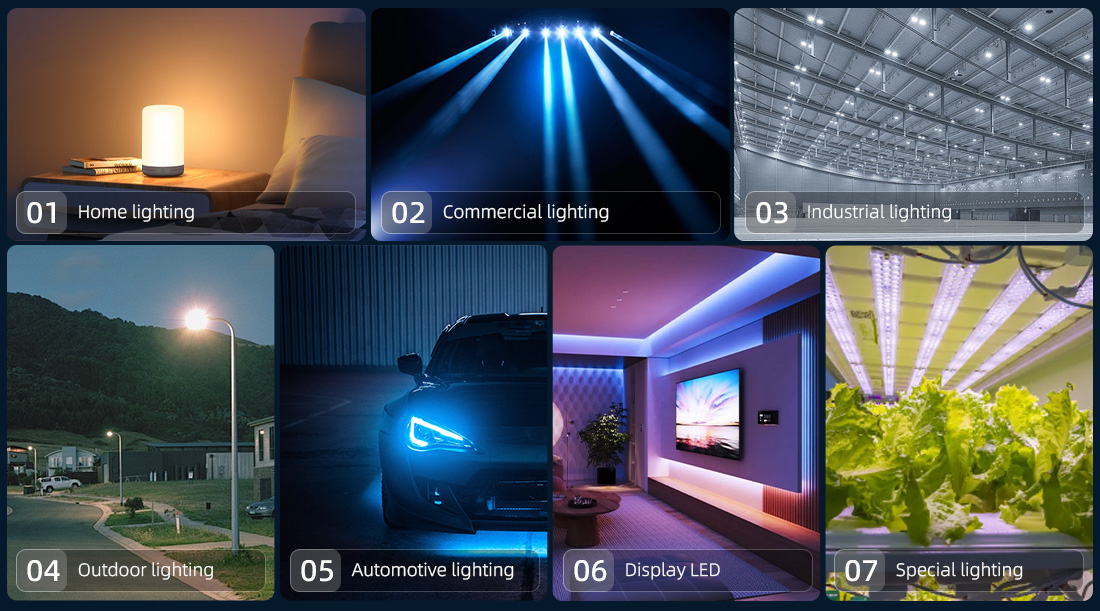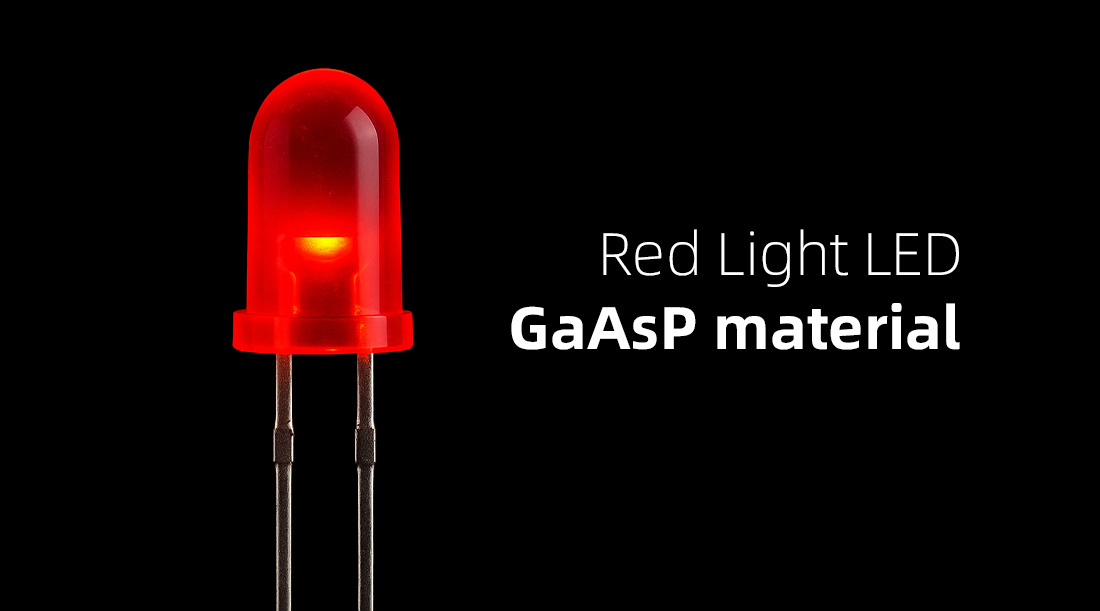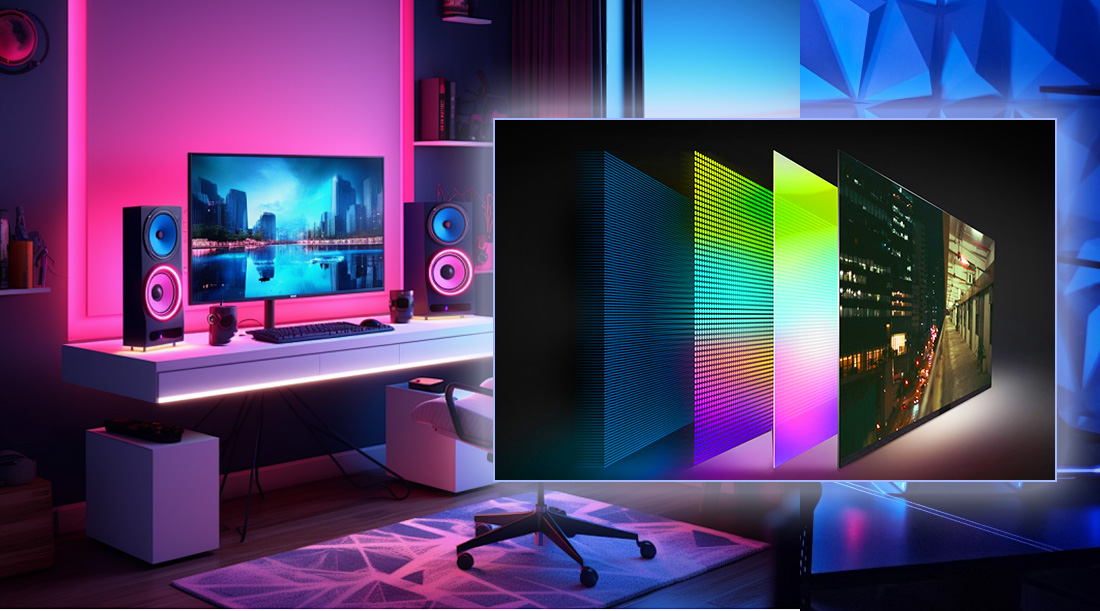The LED development is from laboratory discoveries to a global lighting revolution.With the rapid development of LED,now LED application mainly to :
-Home lighting :LED bulbs, ceiling lights, desk lamps
-Commercial lighting :downlights, spotlights, panel lights
-Industrial lighting :mining lights, high shed lights
-Outdoor lighting :street lights, landscape lights, pool lights
-Automotive lighting :LED headlights, day lights, taillights
-Display LED :advertising screen, Mini LED TV
-Special lighting: UV curing lamp, plant growth lamp
Nowadays,we can see the LED everywhere in our life,this is the result of nearly a century of effort,we can simply to know the development of LED as blow 4 stages :
1.Early explorations (early 20th century -1960s)
-Discovery of electroluminescence (1907)
British engineer Henry Joseph Round first observed electroluminescence on silicon carbide (SiC) crystals, but did not study it in depth.
In 1927, Soviet scientist Oleg Losev further studied and published a paper, considered to be the “father of LED theory”, but the research was interrupted due to World War II.
-The first practical LED was born (1962)
Nick Holonyak Jr., General Electric (GE) Engineer Invented the first visible light LED (red light, GaAsP material).this marks the LED from the laboratory to commercialization, originally used for instrument indicators.
2. Breakthrough of color LED (1970s-1990s)
-Green and yellow leds were introduced (1970s)
1972: M. George Craford (Holonyak’s student) inventives the yellow LED (10 times brighter).
1980s: Aluminum, gallium and arsenic (AlGaAs) materials greatly improved the efficiency of red leds, which were used in traffic lights and electronic equipment.
-Blue LED revolution (1990s)
1993: Japanese scientist Shuji Nakamura (Shuji Nakamura) in Nichia chemical (Nichia) breakthrough gallium nitride (GaN) based blue LED, won the 2014 Nobel Prize in physics.This marks Blue LED + phosphor = white LED, laying the foundation of modern LED lighting.
3. Popularity of white LED and lighting (2000s-2010s)
-White LED commercialization (2000s)
Nichia Chemical, Cree, Osram and other companies launched high-efficiency white leds to gradually replace incandescent and fluorescent lamps.
2006: American Cree company released the first 100lm/W LED, surpassing fluorescent lamp efficiency.
(In 2006 Heguang Lighting begin to produce the LED underwater light)
-LED into general lighting (2010s)
2010s: The cost of LED has dropped significantly, and countries around the world have implemented the “ban on white” (such as the EU phased out incandescent lamps in 2012).
2014: Nobel Prize in Physics awarded to Isamu Akasaki, Hiroshi Amano and Shuji Nakamura for contributions to blue leds.
4. Modern LED technology (2020s till now)
-Mini LED & Micro LED
Mini LED: Used for high-end TVS (such as Apple Pro Display XDR), esports screens, more refined backlight.
Micro LED: self-luminous pixels, is expected to replace OLED (Samsung, SONY have launched prototype products).
- Intelligent lighting and Li-Fi
Smart LED: adjustable color temperature, networking control (such as Philips Hue).
Li-Fi: The use of LED light to transmit data, faster than Wi-Fi (laboratory has reached 224Gbps).
- UV LED and special applications
Uv-c LED: Used for sterilization (such as UV disinfection equipment during the epidemic).
Plant growth LED: Customized spectrum to improve agricultural efficiency.
From “indicator light” to “mainstream lighting” : efficiency is increased by 1,000 times and cost is reduced by 99%,global LED popularization reduces hundreds of millions of tons of CO₂ emissions every year,LED is changing the world ! in the future,LED may revolutionize display, communications, medical and many other industries! We’ll wait and see!
Post time: Apr-29-2025



